Filter by
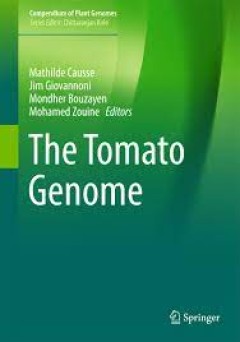
The Tomato Genome
This book describes the strategy used for sequencing, assembling and annotating the tomato genome and presents the main characteristics of this sequence with a special focus on repeated sequences and the ancestral polyploidy events. It also includes the chloroplast and mitochondrial genomes. Tomato (Solanum lycopersicum) is a major crop plant as well as a model for fruit development, and the av…
- Edition
- -
- ISBN/ISSN
- 978-3-662-53389-5
- Collation
- -
- Series Title
- -
- Call Number
- -
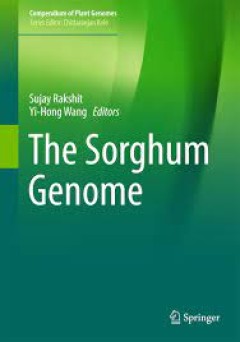
The Sorghum Genome
This book provides insights into the current state of sorghum genomics. It particularly focuses on the tools and strategies employed in genome sequencing and analysis, public and private genomic resources and how all this information is leading to direct outcomes for plant breeders. The advent of affordable whole genome sequencing in combination with existing cereal functional genomics data has…
- Edition
- -
- ISBN/ISSN
- 978-3-319-47789-3
- Collation
- -
- Series Title
- -
- Call Number
- -
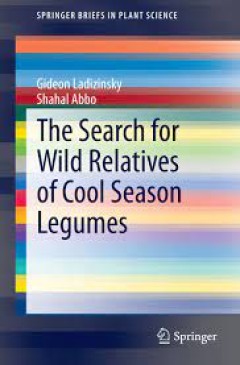
The Search for Wild Relatives of Cool Season Legumes
The study of origin and domestication of legumes described in this book emerged when it became apparent that while this kind of information is adequate for cereals, the pulses lagged behind. At the end of the 1960s the senior author initiated a study on the chickpea's wild relatives followed by similar attempts for broad bean, fenugreek, common vetch, bitter vetch, and lentil. The junior aut…
- Edition
- -
- ISBN/ISSN
- 978-3-319-14505-1
- Collation
- -
- Series Title
- -
- Call Number
- -
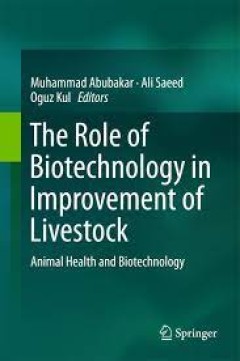
The Role of Biotechnology in Improvement of Livestock Animal Health and Biot…
This book examines how biotechnology can improve livestock breeding and farming, and thereby also animal products. In the first chapters the reader will discover which techniques and approaches are currently used to improve animal breeding, animal health and the value of animal products. Particular attention is given to reproduction techniques, animal nutrition and livestock vaccines that not o…
- Edition
- -
- ISBN/ISSN
- 978-3-662-46789-3
- Collation
- -
- Series Title
- -
- Call Number
- -

Immunopharmacogenomics
This book proposes immunogenomics, or immunopharmacogenomics, as the next-generation big science to uncover the role that the immune system plays in the pathogenesis of many diseases, by summarizing the importance of the deep sequencing of T-cell and B-cell receptors. Immunogenomics/immunopharmacogenomics, a genetic characterization of the immune system made possible by next-generation sequenci…
- Edition
- -
- ISBN/ISSN
- 978-4-431-55725-8
- Collation
- IX, 162
- Series Title
- -
- Call Number
- 616 IMM
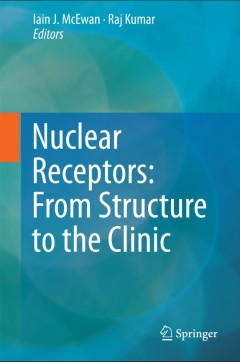
Nuclear Receptors: From Structure to the Clinic
Nuclear Receptors focuses on the structural analysis of nuclear receptors from the initial work using isolated protein domains to the more recent exciting developments investigating the conformational shape of full-length receptor complexes. The book also reviews the structure of key nuclear receptor co-regulatory proteins. It brings together, for the first time, a comprehensive review of nucle…
- Edition
- 1
- ISBN/ISSN
- 978-3-319-18728-0
- Collation
- XI, 236
- Series Title
- -
- Call Number
- -
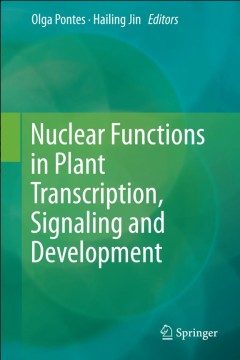
Nuclear Functions in Plant Transcription, Signaling and Development
The genome is more than a linear code as depicted by its DNA sequences as several interacting factors play a crucial role in shaping its organization and function. The complete sequences of a number of plant genomes and the recent advances of high-throughput technologies has fueled research efforts in the field of Plant Nuclear Biology unveiling numerous insights about the mechanisms underlying…
- Edition
- 1
- ISBN/ISSN
- 978-1-4939-2385-4
- Collation
- X, 182
- Series Title
- -
- Call Number
- -
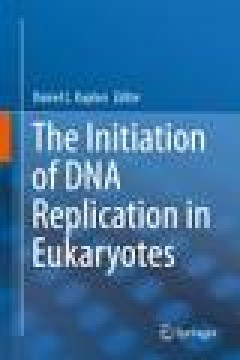
The Initiation of DNA Replication in Eukaryotes
Every time a cell divides, a copy of its genomic DNA has to be faithfully copied to generate new genomic DNA for the daughter cells. The process of DNA replication needs to be precisely regulated to ensure that replication of the genome is complete and accurate, but that re-replication does not occur. Errors in DNA replication can lead to genome instability and cancer. The process of repl…
- Edition
- 1
- ISBN/ISSN
- 978-3-319-24696-3
- Collation
- XII, 563, 3 b/w illustrations, 84 illustrations in colour
- Series Title
- The Initiation of DNA Replication in Eukaryotes
- Call Number
- -

Animal Models of Behavior Genetics
This stimulating analysis reviews the broad potential of animal models to foster a deeper understanding of human pathology, strengthen connections between genetic and behavioral studies, and develop more effective treatments for mental disorders. Widely-studied and lesser-used species are examined in models that capture features along the continuum of normative and pathological behavior. The mo…
- Edition
- Ed. 1
- ISBN/ISSN
- 978-1-4939-3777-6
- Collation
- XVI, 389
- Series Title
- Advances in Behavior Genetics
- Call Number
- 616.80076 ANI a

Angiogenesis in Health, Disease and Malignancy
This book is about “Angiogenesis”. A process in which new vasculature is formed from pre-existing capillaries. Angiogenesis process is associated with the proliferation and growth of both physiologically normal and neoplastic tissues, through the formation of vascular supply, essential for delivering growth requirements such as oxygen and nutrients. The book describes more than 100 genes…
- Edition
- Ed. 1
- ISBN/ISSN
- 978-3-319-28140-7
- Collation
- XVIII, 423
- Series Title
- -
- Call Number
- 574.192 SAL a
 Computer Science, Information & General Works
Computer Science, Information & General Works  Philosophy & Psychology
Philosophy & Psychology  Religion
Religion  Social Sciences
Social Sciences  Language
Language  Pure Science
Pure Science  Applied Sciences
Applied Sciences  Art & Recreation
Art & Recreation  Literature
Literature  History & Geography
History & Geography